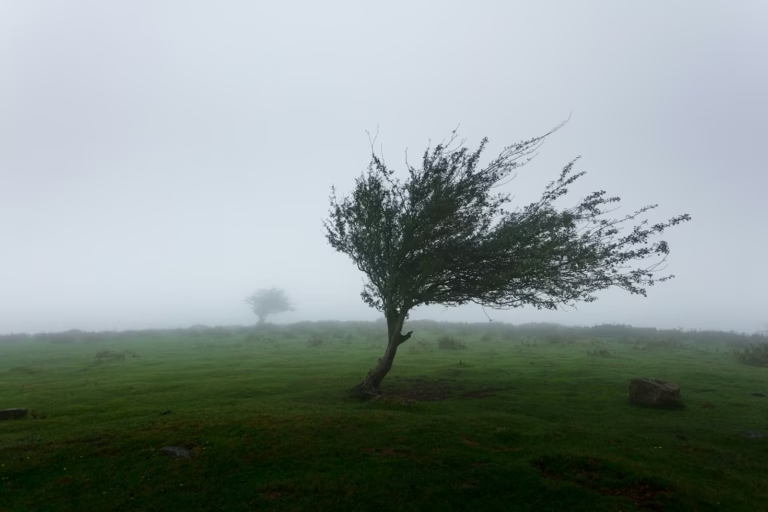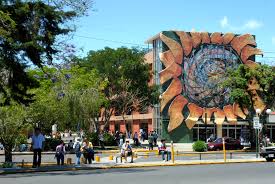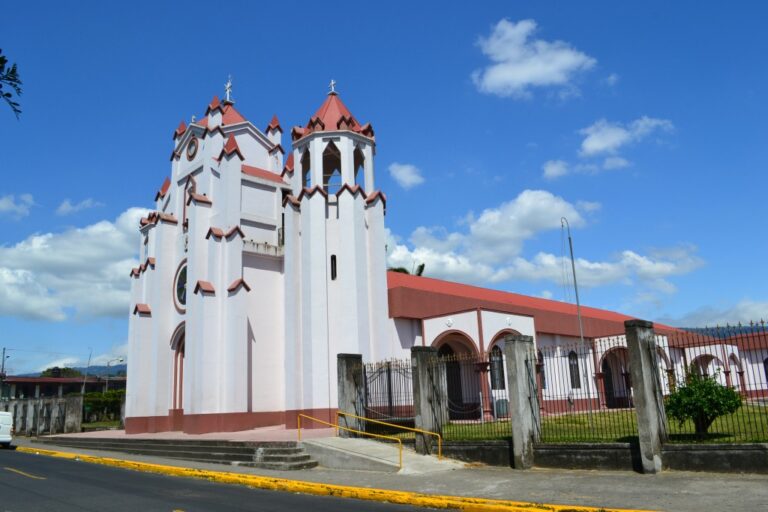Costa Rica has officially started its cold front season. The first one of 2025 has already been felt during the early days of November, marking the beginning of a period where northern winds, cooler nights, and clear skies take center stage.
But what exactly are cold fronts, how do they form, and what can we expect from them in the coming months?
1. What is a cold front?
A cold front is the boundary that separates a mass of cold, dry air from a warmer, humid one. When the cold, denser air moves in and pushes the warm air upwards, an abrupt atmospheric change occurs: the warm air rises, cools down, and its water vapor condenses, forming clouds and rain.
On weather maps, cold fronts are represented by a blue line with triangles, indicating the direction of movement. Their passage usually brings stronger winds, a drop in temperature, and clearer skies after the event.
In temperate regions, cold fronts can trigger intense storms and sharp drops in temperature. In Costa Rica, their effects are more moderate but noticeable: cooler nights, northern winds, and a sense of change in the air associated with the transition to the dry season.
2. How are cold fronts generated?
Cold fronts are formed when a polar or continental cold air mass moves towards lower latitudes, pushing away the warmer tropical air.
In the northern hemisphere, this mainly happens between November and March, when the thermal contrast between the north and the tropics intensifies.
In Costa Rica, cold fronts originate in North America and travel south driven by northern winds and high-pressure systems. Even though the country is in the tropics, its topography —with ranges channeling the wind— makes these systems directly influence the climate, especially in the Central Valley, the Caribbean, and highland areas.
3. Effects of cold fronts in Costa Rica
- Temperature drop: During cold fronts, the air turns notably cooler. In highland areas like Cartago, San José or Zarcero, temperatures can fall by 3 to 6 °C compared to the usual average. On the coast, the difference is smaller, but the thermal sensation can be more intense due to the wind.
- Wind changes: One of the clearest signs of a cold front passing by are the northern winds, popularly known as “strong trade winds.” These dry, cool winds intensify during November, December, and January, especially affecting the Central Valley, Guanacaste, and the mountain ranges. In the Caribbean, winds can cause bigger waves and in the northern Pacific, a rougher sea.
- Rain and cloudiness: Though associated with drier air, cold fronts can generate rain when interacting with the humidity from the Caribbean. These rains usually concentrate in the Northern Caribbean, Northern Zone, and north of the Central Valley, while the Pacific experiences sunnier days. Often, after a cold front passes, a period of clear skies and cooler mornings follows.
- Thermal sensation: The thermal sensation depends not only on temperature, but also on wind and humidity. At this time, northern winds can make the air feel 2 to 5 degrees cooler than the thermometer shows, especially at night and early morning.
4. Impact on daily life and nature
The passage of cold fronts marks a climatic transition influencing various aspects of life in the country:
- Tourism: It’s the prelude to the high season, with clear skies and ideal temperatures for visiting national parks, mountains, and beaches.
- Agriculture: Some crops sensitive to the cold (such as vegetables or flowers) may require protection at night.
- Health: Abrupt temperature changes can cause colds or allergies in sensitive people.
- Natural environment: Drier air and northern winds help clean the atmosphere, decrease humidity, and favor visibility in mountains and ranges.
5. What to expect in the coming months
According to the National Meteorological Institute (IMN), November marks the official start of cold front season, influencing until February or March 2026. Typically, between 10 and 15 cold fronts will affect the country indirectly, varying in intensity.
Look out for:
- Strong winds and gusts in the Central Valley and Guanacaste.
- Lower temperatures, especially at night.
- Big waves in the Caribbean and northern Pacific.
- A progressive transition to the dry season, with reduced rain on the Pacific slope.
Overall, the coming months will offer more stable, cool, and clear weather, ideal for outdoor activities and tourism in mountain or rural areas.
6. Practical tips for this season:
- Dress in layers: Cold mornings and nights, but warm midday.
- Secure roofs and gutters: Northern winds can be strong.
- Follow official IMN reports: For possible wind, wave or rain alerts.
- Care for your health: Stay hydrated and avoid abrupt temperature changes.
- Plan trips or tours considering the forecast, especially in coastal or mountain areas.
The arrival of the first cold front in November marks a new phase in Costa Rica’s climate, with drier, cooler air and bluer skies. These systems, though moderate, are essential to understand the dynamics of our tropical climate and the balance between seasons.
For many, the start of cold fronts is the clearest sign that the dry season and year-end festivities are near — a natural invitation to enjoy fresh air, clear sunsets, and the beauty of Costa Rica in a sharper light.


















